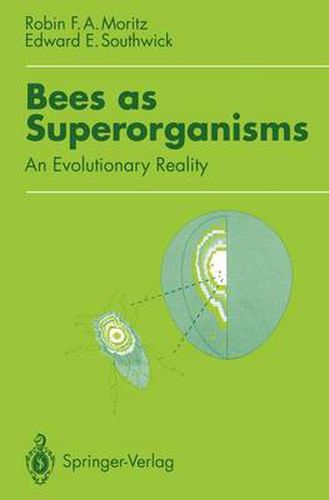Readings Newsletter
Become a Readings Member to make your shopping experience even easier.
Sign in or sign up for free!
You’re not far away from qualifying for FREE standard shipping within Australia
You’ve qualified for FREE standard shipping within Australia
The cart is loading…






This title is printed to order. This book may have been self-published. If so, we cannot guarantee the quality of the content. In the main most books will have gone through the editing process however some may not. We therefore suggest that you be aware of this before ordering this book. If in doubt check either the author or publisher’s details as we are unable to accept any returns unless they are faulty. Please contact us if you have any questions.
The honeybee (Apis melli/era L. ) is one of the better studied organisms on this planet. There are plenty of books on the biology of the honeybee for all, the scientist, the beekeeper, and the layman. In view of this flood of publications one is tempted to ask: why does it require another one? The answer is simple: a new one is not required and we do not intend to present a new book on the honeybee . This would really just add some more inches to the already overloaded bookshelf without sub stantial new information. Instead, we intend to present a book on the honeybee colony. This of course immediately releases the next question: so what is the difference? Although the difference may look insignificant at first glance, we try to guide the reader with a fundamentally different approach through the biology of honeybees and eusocial insect societies in general. The biology of individual colony members is only addressed when it is necessary to explain colonial mechanisms, and the colony as a whole, as a biological unit, which is the main focus of this treatise. Both of us felt that all current textbooks on bee biology put too much emphasis on the individual worker, queen or drone in the colony. Often it is com pletely neglected that the colony is a very significant (if not the most significant) biological structure in bee biology.
$9.00 standard shipping within Australia
FREE standard shipping within Australia for orders over $100.00
Express & International shipping calculated at checkout
This title is printed to order. This book may have been self-published. If so, we cannot guarantee the quality of the content. In the main most books will have gone through the editing process however some may not. We therefore suggest that you be aware of this before ordering this book. If in doubt check either the author or publisher’s details as we are unable to accept any returns unless they are faulty. Please contact us if you have any questions.
The honeybee (Apis melli/era L. ) is one of the better studied organisms on this planet. There are plenty of books on the biology of the honeybee for all, the scientist, the beekeeper, and the layman. In view of this flood of publications one is tempted to ask: why does it require another one? The answer is simple: a new one is not required and we do not intend to present a new book on the honeybee . This would really just add some more inches to the already overloaded bookshelf without sub stantial new information. Instead, we intend to present a book on the honeybee colony. This of course immediately releases the next question: so what is the difference? Although the difference may look insignificant at first glance, we try to guide the reader with a fundamentally different approach through the biology of honeybees and eusocial insect societies in general. The biology of individual colony members is only addressed when it is necessary to explain colonial mechanisms, and the colony as a whole, as a biological unit, which is the main focus of this treatise. Both of us felt that all current textbooks on bee biology put too much emphasis on the individual worker, queen or drone in the colony. Often it is com pletely neglected that the colony is a very significant (if not the most significant) biological structure in bee biology.